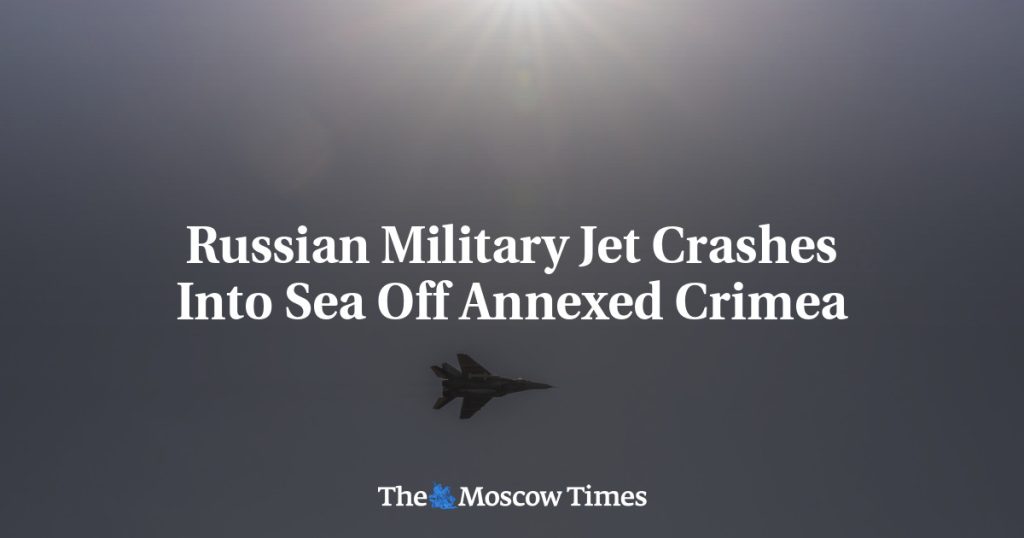A Russian military plane crashed into the waters off the coast of annexed Crimea, with the pilot ejected to safety and rescued by the Sevastopol Rescue Service. The cause of the crash was not immediately clear, as reported by the Moscow-installed governor of Sevastopol, Mikhail Razvozhayev. Unverified videos on social media showed the plane in flames falling from the sky, with another video showing the pilot safely drifting down with a parachute. The incident occurred in Sevastopol, the historic home of Russia’s Black Sea fleet, which is located in Crimea, annexed by Moscow in 2014.
This crash comes in the midst of ongoing conflict in the region, with the peninsula facing regular attacks from Ukraine following Russia’s full-scale invasion in February 2022. The situation in Crimea remains tense, as tensions between Russia and Ukraine continue to escalate. The pilot’s safe rescue represents a fortunate outcome in what could have been a tragic incident, highlighting the importance of swift response and effective rescue operations in emergency situations. The incident serves as a reminder of the risks and challenges faced by military personnel, especially during times of conflict and heightened security threats.
The incident also raises questions about the safety and maintenance of Russian military aircraft, as the cause of the crash remains unknown. The potential implications of such incidents on military operations and morale within the Russian armed forces are also worth considering. The crash may prompt further scrutiny and investigation into the circumstances that led to the incident, in order to prevent similar accidents in the future. It underscores the need for rigorous safety protocols and training for military personnel, especially in high-risk environments such as combat zones.
The crash of the Russian military plane off the coast of Crimea underscores the volatility and risks associated with the ongoing conflict between Russia and Ukraine. The incident serves as a stark reminder of the human cost of war and the sacrifices made by military personnel in the line of duty. It also highlights the importance of international efforts to promote peace and de-escalation in the region, in order to prevent further loss of life and damage to infrastructure. As tensions continue to simmer in Crimea and across the wider region, the need for diplomatic solutions and dialogue becomes ever more urgent.
The pilot’s safe rescue in the aftermath of the crash offers a glimmer of hope amidst the turmoil and uncertainty in Crimea. It demonstrates the resilience and courage of military personnel in the face of adversity, and the importance of effective emergency response mechanisms. The incident serves as a testament to the dedication and professionalism of rescue teams and first responders, who work tirelessly to ensure the safety and well-being of individuals in danger. It also serves as a reminder of the value of cooperation and solidarity in times of crisis, as communities come together to support and protect one another.
In conclusion, the crash of the Russian military plane in Crimea highlights the complexities and dangers of the ongoing conflict in the region. It underscores the need for increased vigilance and preparedness in the face of security threats and military operations. The incident serves as a sobering reminder of the human impact of war, as well as the importance of international cooperation and diplomacy in resolving conflicts and preventing further bloodshed. As the situation in Crimea continues to evolve, efforts to promote peace, dialogue, and reconciliation become all the more crucial in order to ensure the safety and security of all those affected by the conflict.


